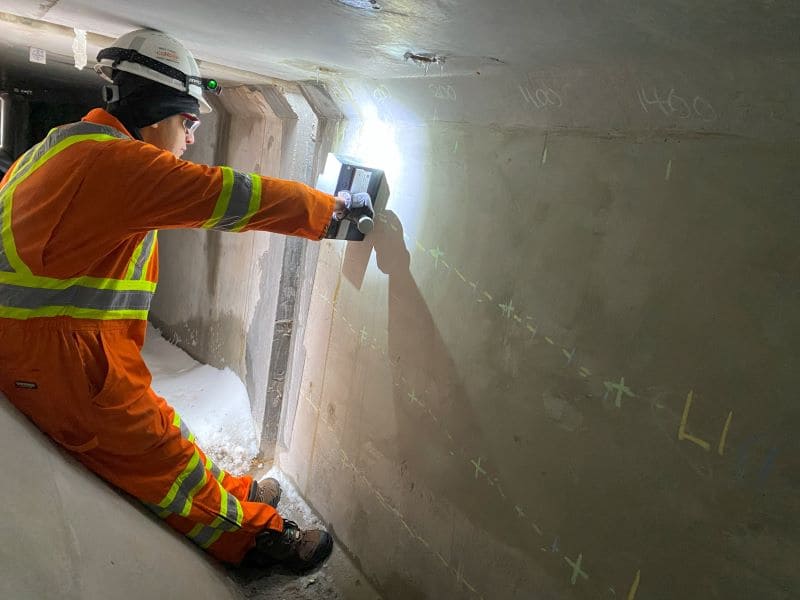Scope
FPrimeC Solutions Inc. was engaged by the client to perform non-destructive evaluation (NDE) of post-tensioning ducts using Ultrasonic Pulse Echo (UPE) tomography on select post-tensioning girders. The main objective of the project was to evaluate the condition of grouting in the ducts, and to detect potential anomalies, including voids or soft grout in Post-Tensioning (PT) ducts .
_1687179835.jpg)
Methodology
It was understood that the client had some concerns with regards to grouting condition in the existing PT ducts on or around the high end points at the girder ends. A multi-technology approach involving the Ground Penetrating Radar (GPR) and Ultrasonic Pulse Echo (UPE) tomography was used for evaluating the quality of grouting inside the post-tensioning ducts and to verify if the ducts are fully filled with grout.
Ground Penetrating Radar (GPR) scans was performed to identify the precise location and positioning of the PT ducts. The alignment of the post-tensioning ducts was validated against the existing drawings. A system of gridlines was mapped along the post-tensioning ducts.
Ultrasonic Pulse Echo Scan of Voids in PT Ducts
The Ultrasonic Pulse-Echo (UPE) method was used to assess the quality and condition of the grouting in the PT ducts. The concept behind this method relies on the propagation of stress waves through materials. A transmitter introduces a stress pulse into the object and is reflected by flaws or interfaces which is then sent back to the receiving transducer. Areas with potential anomalies were identified through the UPE scan of the ducts.

Validation through Impact-Echo Testing
Further testing involving the Impact-Echo testing of the voids in the PT ducts along with further validation through intrusive assessment and borescope investigation was proposed to complete the investigation.
